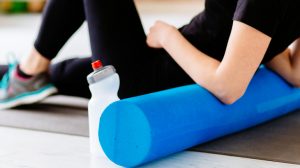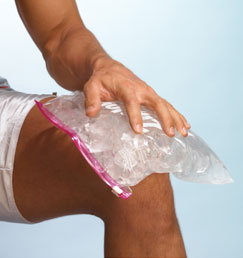What are Shin Splints?
What are Shin Splints?
We treat a lot of different conditions at The Boston Bodyworker, ranging from general stress and fatigue to chronic pain. One of the more popular complaints we get from our running population is shin splints. If you have ever had them, you know how uncomfortable the pain can be and how it sidelines you at the most inopportune times.
Shin pain, commonly along the distal (lower), inside aspect of the tibia (long bone between the knee and ankle) can seemingly come on by surprise. Even if you are being observant about your training and listening to even the “minor” aches and pains that are associated with this condition, you may still be prone to the occasional occurrence of this nagging little injury. Shin splints are quite the anomaly in the physical medicine world. There are many schools of thought about both “how” and “why” they occur as well as recommended treatment suggestion on how to combat them.
Shin splints can occur somewhat unsuspectingly, but my experience has shown me a rather consistent pattern when taking a patients history. The combination of overuse/repetitive stress is frequently accompanied by an increase in training by more than 10%. Characteristically, this occurs over a prolonged period of time after placing constant pounding and stress on bones, joints and muscles of the lower leg. However, they can also occur rather quickly, like when one starts a new training program (i.e. starting a new sport). The end result is irritation and inflammation, which leads to pain.
Some Factors that can contribute to shin splints are:
- Running down hill
- Sudden increase in your training frequency, duration or intensity
- Old shoes
- Exercising on hard or inclined surfaces
- Previous history of shin splints that may not have been rehabbed properly
- Flat feet, ridged arches and over pronation
So what is the pain I am feeling?
 The pain you are feeling can be from tight calf muscles stressing the tenoperiosteum. The ‘teno-whata-what-sium’? I know, right? The word is actually a combination of two types of connective tissues. ‘Teno’, meaning tendon, the part of the muscle that connects muscles to the bones, and the periosteum, the thin layer that envelops the bones. Over time, calf tightness can create tensile and shear loading on this area of the lower leg that can elicit severe pain. The reason pain occurs in this area and not in so many other areas the tendons attach to bones is because of a thin membrane of periosteum known as the interoseous membrane (visualize a soap bubble before you blow it through a hole) that bridges between the tibia and fibula. A portion of the tibialis posterior muscle (deep calf muscle) attaches to this thin membrane. When the muscle is placed under extreme loads and stress over time, it becomes tight, as do its counter parts, the soleus and gastrocnemius. The end result is medial tibial stress syndrome, a.k.a. shin splints.
The pain you are feeling can be from tight calf muscles stressing the tenoperiosteum. The ‘teno-whata-what-sium’? I know, right? The word is actually a combination of two types of connective tissues. ‘Teno’, meaning tendon, the part of the muscle that connects muscles to the bones, and the periosteum, the thin layer that envelops the bones. Over time, calf tightness can create tensile and shear loading on this area of the lower leg that can elicit severe pain. The reason pain occurs in this area and not in so many other areas the tendons attach to bones is because of a thin membrane of periosteum known as the interoseous membrane (visualize a soap bubble before you blow it through a hole) that bridges between the tibia and fibula. A portion of the tibialis posterior muscle (deep calf muscle) attaches to this thin membrane. When the muscle is placed under extreme loads and stress over time, it becomes tight, as do its counter parts, the soleus and gastrocnemius. The end result is medial tibial stress syndrome, a.k.a. shin splints.
Great Drew! Now how do I get rid of this so I can run? I have a race in two weeks.
I wish I had a miracle cure for this condition. If I did, I would have a business exclusively dedicated to the treatment and cure of shin splints. It would be a HUGE windfall. One in three runners will suffer a bout of shin splints in their lifetime, typically at the worst possible time (i.e. before your first marathon, starting a new exercise routine to lose weight, etc.)
Unfortunately, the only real cure is rest.
Yeah right!
Try telling that to the aforementioned inaugural marathoner.
No Magic Bullet!
I will say that I have had considerable success using active engagement techniques in conjunction with kinesiology-taping methods that have provided significant diminished pain with a return to activity. This is NOT a cure. This is merely a “Band-Aid” to get you through. Conservative treatments such as rest and ice are paramount when coping with this injury. Failure to do observe this may lead to more serious issues such as a stress fracture.
An Ounce of Prevention
There is no guaranteed way to avoid getting shin splints. If you have had them in the past or are concerned that you may get them, than a pro-active approach is required (as in any training you do). First and foremost, be conservative in ramping up any training. Anything more than 10% is inviting trouble. Following up your training with ice massage as well as some self-care techniques (calf stretches and self massage along the tibia) is your best bet for avoiding this nasty beast of an injury. Failure to consider its impact on your training is a slippery slope. True, you may never get them, but do you really want to tempt fate when you just spent the last 4 months training for the biggest race of your life?
I hope this helps you to understand a little more about shin splints. If you have questions about this or would like to know more about another type of injury you are experiencing, please shoot me an email and I will consider it for an upcoming blog post.
Until next time, Feel Better!
Ready to #feelbetter?
You're just a click away from a wicked good massage!
-

60 Minute Massage Gift Card
$170.00 Add to cart -

90 Minute Massage Gift Card
$255.00 Add to cart -

Mini Aer Small Room Air Purifier
$149.00 Add to cart -
Sale!

Thera-Pearl Sports Pack/Hot Cold
Original price was: $14.99.$12.99Current price is: $12.99. Add to cart -

3 Somadome Sessions Gift Card
$135.00 Add to cart -

20 Minute Somadome Gift Card
$45.00 Add to cart -
Sale!

TheraBand® Stretch Strap
Original price was: $19.99.$14.99Current price is: $14.99. Add to cart -

TheraBand CLX Connective Loop
$14.99 Select options
May Flowers-Life Hack
April Showers Bring 5 Flower Hacks What do you get when you combine soda, vodka, apple cider vinegar, hair spray & bleach? Some incredible ways to preserve your flowers this season. Sure, April showers bring May flowers, but mother nature went a tad over board with it this April. So how well are you prepared…
Read More#FeelBetterBoston Recap
#FeelBetterBoston Recap The inaugural #FeelBetterBoston Massage & Community Wellness event over Marathon weekend left people with a smile on their face and genuine appreciation for all that was provided. We knew this being the first time we held such an event that we would be competing with the likes of the infamous BAA Expo and other…
Read MoreHow Do You Roll??
How Do You Roll?? Are Foam Rolling Advocates Stretching the Truth? Foam rolling is one of the most common means of self-care for so many people. It has been thought to provide many benefits such as enhanced performance, improved flexibility and speed, pain reduction and muscle recovery. Often it is referred to as a self-massage technique,…
Read MoreOn the Mend
On the Mend As we quickly approach the holy grail of running events, the Boston Marathon, we start to see a rise in our battered and beaten road warriors. Overuse conditions from months of increased training, acute injuries from falls on slippery roads and chronic aches and pains, all result in the patient surrendering to…
Read MoreLife Hack: Watch the SB LIII on TV, but LISTEN on the Radio
Life Hack: Watch the SB LIII on TV, but LISTEN on the Radio So, our beloved Pats are back in the big game again. I’m not going to relay stats and numbers that drive home the dynasty known as the New England Patriots. We are all aware of them. However, if you want to enjoy…
Read MoreCortisone Injections: Yay or Ney?
Cortisone Injections: Yay or Ney? As massage therapists, we often see patients who have been struggling to find an answer for a particular pain problem. Some of these cases are acute (sudden onset) where others may be chronic (reoccurring over a long period of time). It is not uncommon to have a patient ask us…
Read MoreChiropractic Care at The Boston Bodyworker
Chiropractic Care at The Boston Bodyworker We are excited to announce the arrival of Dr. Jean Kelly of Momentum Healthcare to our office. Dr. Kelly has been practicing in our building for the past 10 years and has been a friend to The Boston Bodyworker for almost 20 years. We are honored to have her…
Read MoreSpine Health: Don’t Ignore It!
Spine Health: Don’t Ignore It! The new year always provides us with the feeling of having a clean slate. Let’s face it, most of us don’t take very good care of our spines. 2019 can be the year that your resolutions come true. This lack of care can lead to physical discomfort and make us…
Read MoreLife Hack: Drink Tea
Life Hack: Drink Tea With the rainiest and most dreary Fall in recent time behind us and winter now in full swing, the need for us to provide optimal care for ourselves is high. Despite American’s love affair with coffee, tea is really the more versatile of the beverages. Most of us reach for a…
Read MoreLife Hack: Forward Head Posture
Life Hack: Forward Head Posture How many times in the course of a day do you roll your shoulders and neck around to alleviate “the spot” in between your shoulder blades. There are several reasons for the discomfort you are experiencing, but one way to resolve this is to do what is known as a…
Read More



